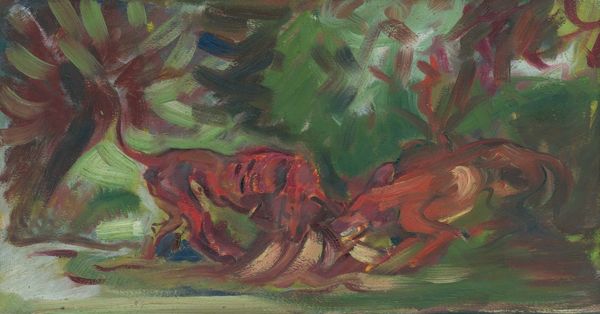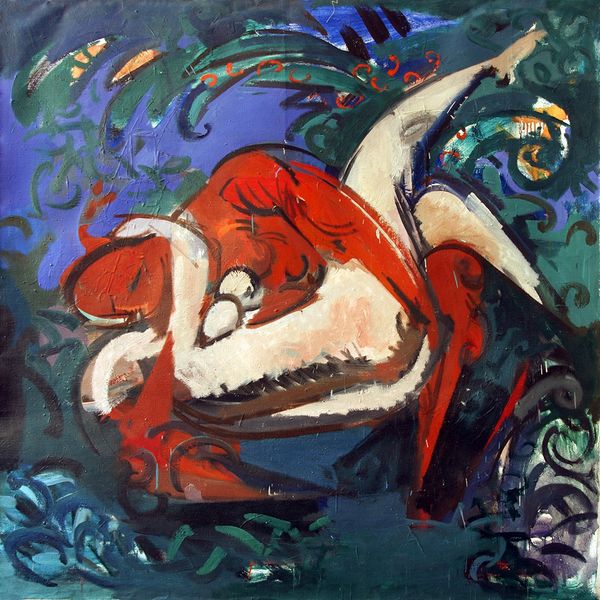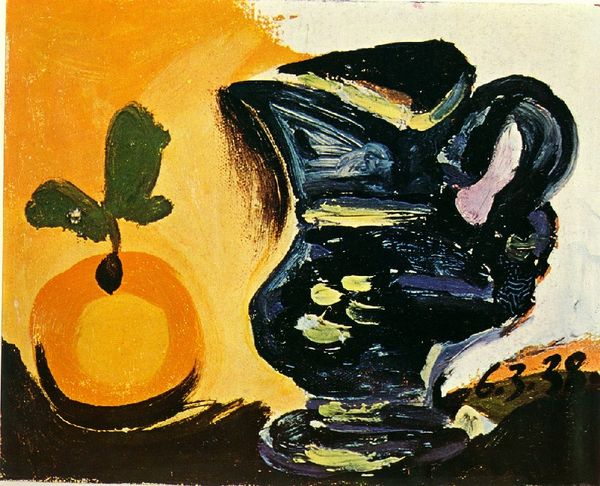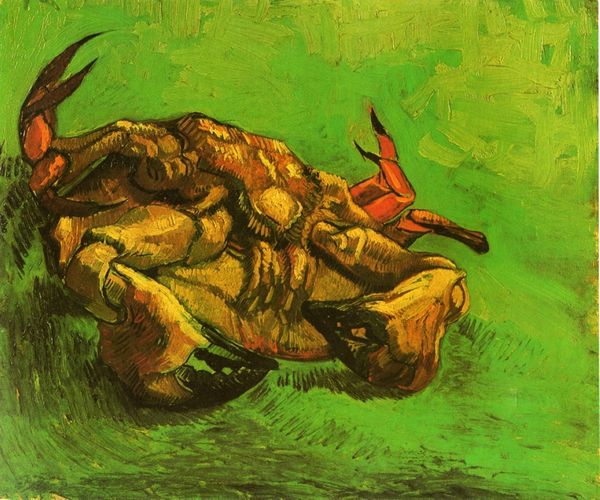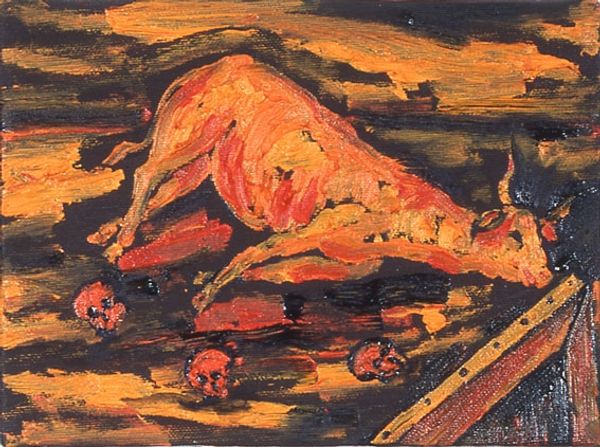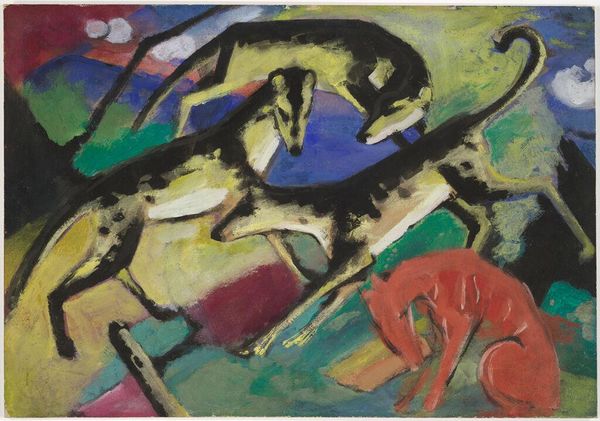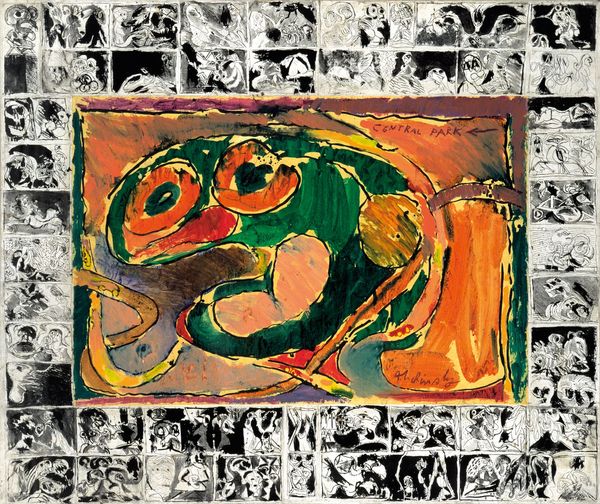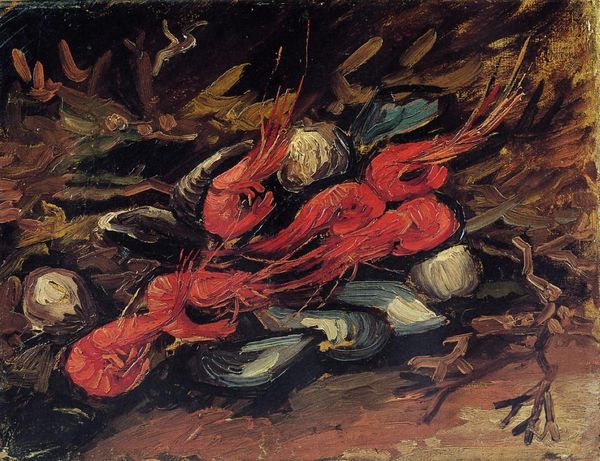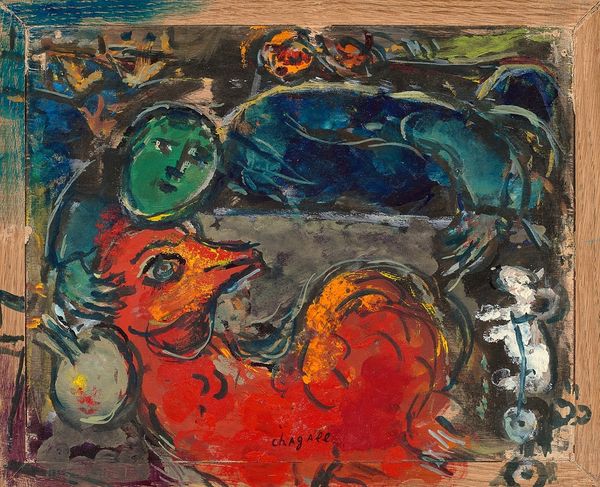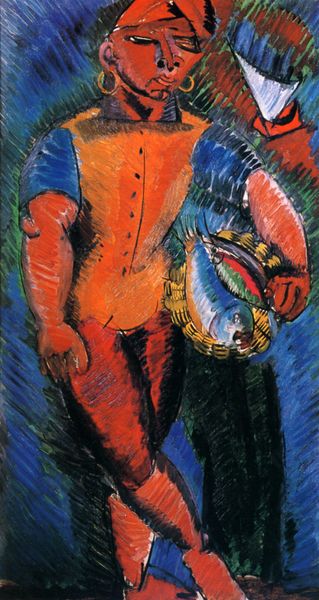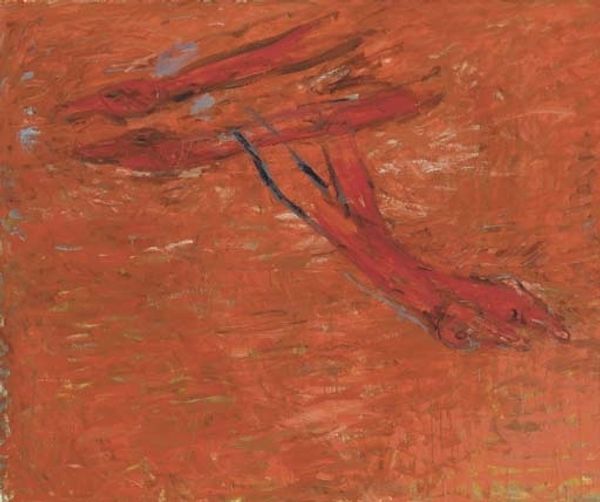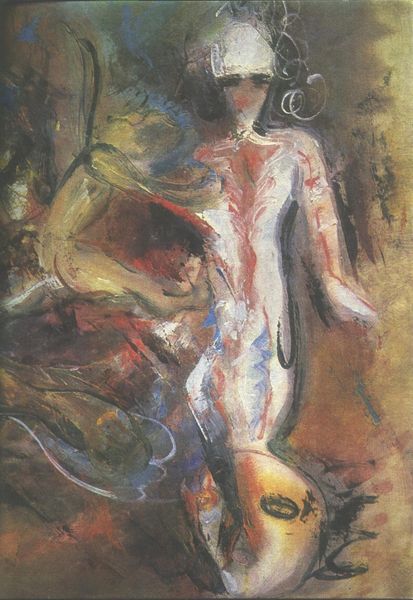
painting, watercolor
#
animal
#
painting
#
landscape
#
figuration
#
form
#
oil painting
#
watercolor
#
expressionism
#
watercolor
Dimensions: 16.19 x 13.02 cm
Copyright: Public domain
Editor: This is "Dead Deer," painted by Franz Marc in 1913. It looks like watercolor and oil on paper, and it's held in a private collection. The swirling colors and slumped form create such a feeling of… resignation, I guess? How do you interpret this work? Curator: The red of the deer dominates, doesn't it? Marc associated red with violence. Look how that forceful colour interacts with the blues beneath, signifying perhaps spirituality or melancholy. It becomes a stark visual metaphor. What do you make of the curvature of the deer’s body, almost fetal? Editor: That’s interesting; I hadn’t considered the symbolic weight of the colours so literally, or seen that fetal shape. So you're saying that this goes beyond just representing death; it's about loss, innocence lost? Curator: Precisely. The animal often symbolizes instinct, and here, that natural instinct is extinguished. Expressionism sought to portray inner emotions rather than external reality. Can you see how the surrounding colours – the murky green and black – contribute to a sense of a world itself dying, or at least in mourning? Editor: I do now, especially given the context of 1913, on the brink of World War One… it’s almost prophetic. Curator: Yes, Marc himself died in the war. Knowing that adds another layer, doesn’t it? The deer becomes a symbol of vulnerability, of the fragility of life itself. Art carries forward cultural memory this way. Editor: I see how symbols and context shape our understanding. Thanks, I have a completely different understanding now! Curator: A deeper understanding, I trust. Visual symbols often operate this way, transcending mere representation. I, too, am always fascinated by these emotional undercurrents.
Comments
No comments
Be the first to comment and join the conversation on the ultimate creative platform.
